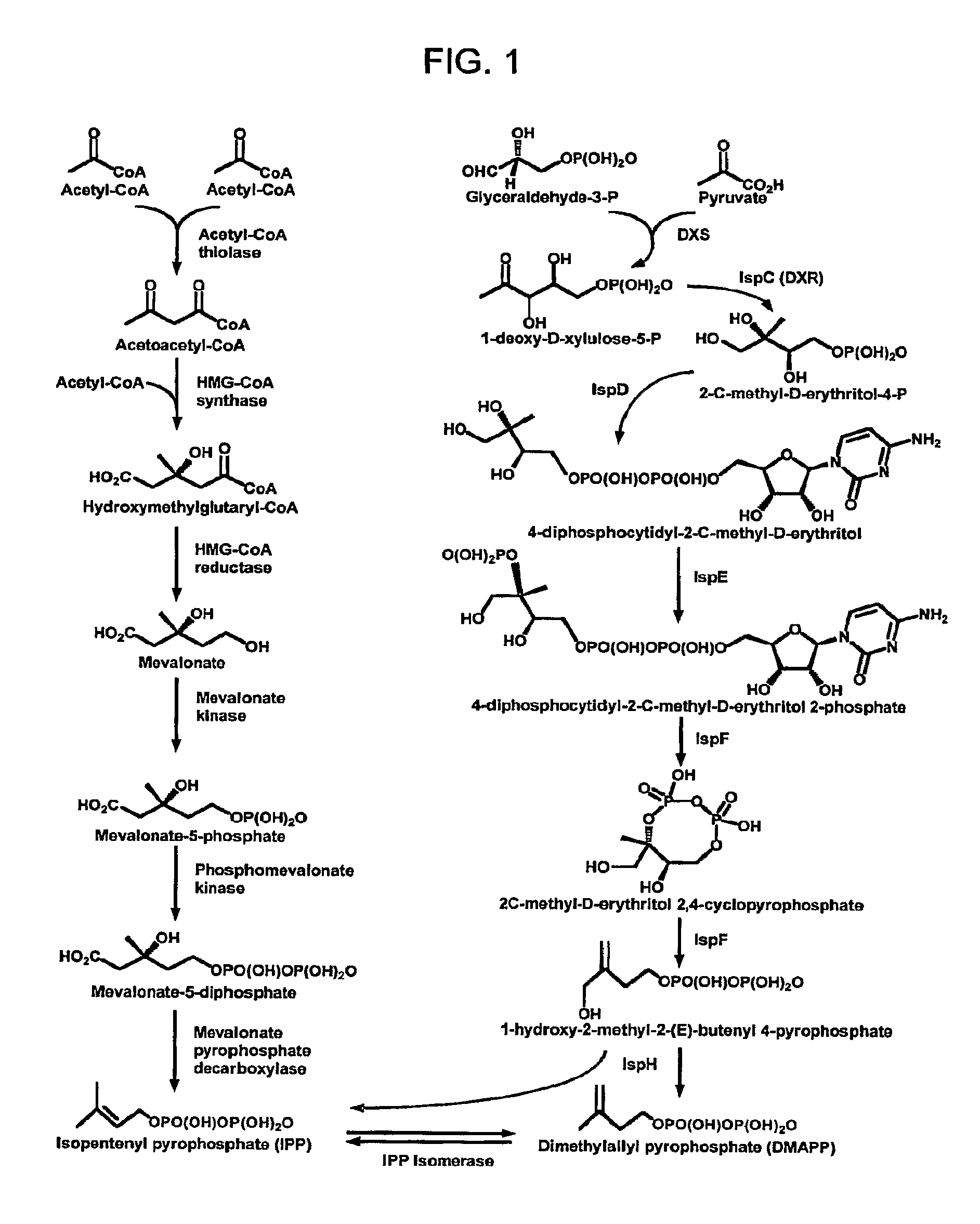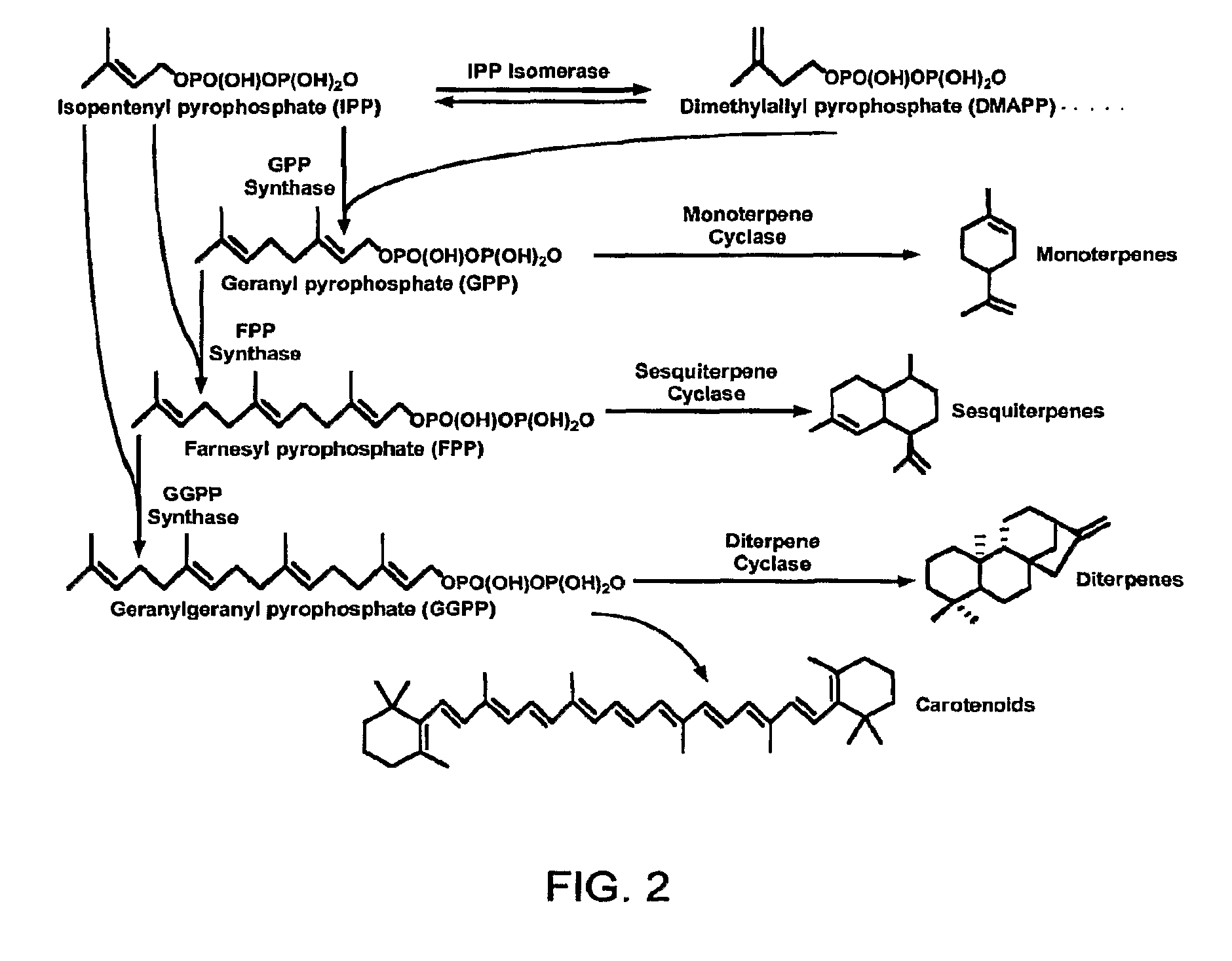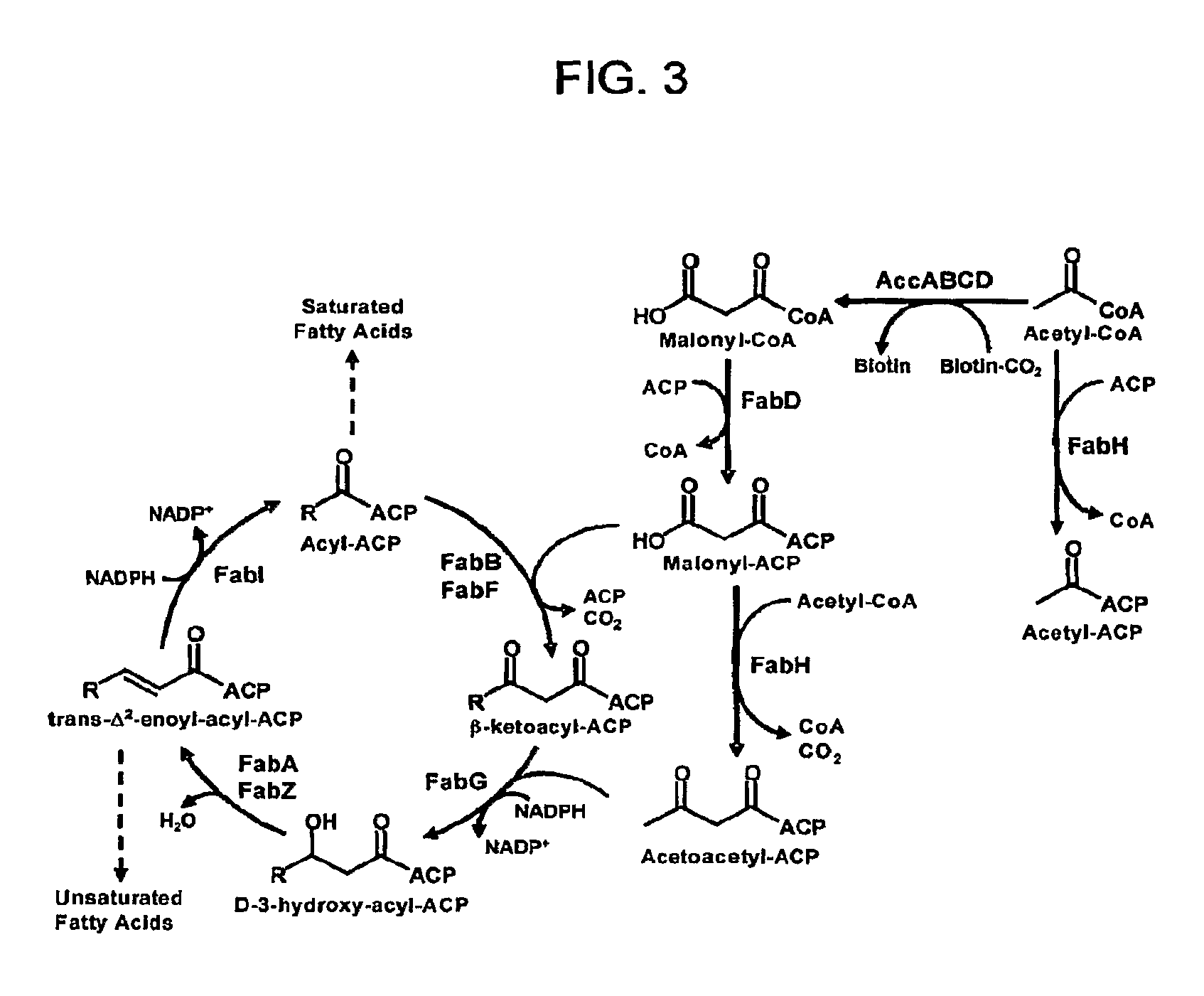Methods for increasing isoprenoid and isoprenoid precursor production by modulating fatty acid levels
a technology of fatty acid level and isoprenoid, which is applied in the direction of biochemistry apparatus and processes, bacteria, microorganisms, etc., can solve the problems of excessive consumption of natural resources, low yield, impurities, etc., and achieve the effect of increasing the production of an isoprenoid and increasing the osmolarity
- Summary
- Abstract
- Description
- Claims
- Application Information
AI Technical Summary
Benefits of technology
Problems solved by technology
Method used
Image
Examples
example 1
Enhancing Isoprenoid Production by Modulating Fatty Acid Levels
[0191]
TABLE 1Strains and plasmids used in this study.Strain / PlasmidGenotype / DescriptionDH10BF-, mcrA, Δ(mrr-hsdRMS-mcrBC), F801acZΔM15, ΔlacX74, recA1, endA1, araD139, Δ (ara, leu)7697, galU, galK, λ-, rpsL (StrR), nupGDP10DH10B, Δ(araFGH) φ(ΔaraEp Pcp8-araE)TOP10F-, mcrA, Δ(mrr-hsdRMS-mcrBC), F801acZΔM15, ΔlacX74, recA1, endA1, araD139, Δ (ara, leu)7697, galU, galK, λ-, rpsL (StrR), nupGpADSpTrc99A containing synthetic ADS; AprpAtoBpBad33 containing atoB under control of PBAD promoter; CmrpBad18Cloning vector containing Apr, modified pBR322 origin with truncation of rop gene, araC, and PBAD promoterpBad18HMGRpBad18 containing tHMGR under control of PBAD promoter; AprpBad24Cloning vector containing Apr, modified pBR322 origin with truncation of rop gene, araC, and PBAD promoterpBad24MevTpBad24 containing atoB, HMGS, tHMGR under control of PBAD promoter; AprpBad33Cloning vector containing Cmr, pACYC184 origin, araC, and P...
example 2
Supplementing Growth Media with Specific Fatty Acids Alleviates Growth Inhibition Caused by the Accumulation of HMG-CoA in Engineered E. coli
[0292]To further test the action of HMG-CoA on E. coli metabolism and design a method for alleviating growth inhibition, cells expressing the various MevT constructs were supplemented with fatty acids to test for deficiencies. E. coli strains carrying a temperature sensitive fabD allele have been shown to grow at non-permissive temperatures with the addition of either palmitic acid (16:0) (Harder et al. J Biol Chem 249, 7468-7475 (1974)) or a combination of palmitic and palmitoleic acid (cis-Δ9-16:1) (Harder et al. Proc Natl Acad Sci U S A 69, 3105-3109 (1972)), but not cis-Δ9-16:1 (Harder et al., (1974) supra). Due to the role of FabB in unsaturated fatty acid biosynthesis, temperature sensitive mutants of fabB show reduced unsaturated fatty acid content under non-permissive conditions but can grow with exogenous oleic acid (cis-Δ9-18:1) (Bro...
example 3
Alleviating Growth Inhibition and Enhancing Isoprenoid Production by Increasing Media Osmolarity
[0299]Coincident with the inhibition of fatty acid synthesis, we have observed evidence in microarray studies that suggest alteration of the lipid membrane in cells experiencing HMG-CoA toxicity. As discussed above, a portion of the stress response in cells harboring pBad33MevT corresponds to osmotic stress and oxidative stress. By inhibiting proper lipid formation, the lipid membrane may be altered causing an interruption in the electron transport chain—a major source of peroxide.
[0300]To further test if cells inhibited by the accumulation of HMG-CoA are suffering from osmotic stress, cells harboring pBad33MevT or pBad33 (the empty vector control) were incubated and induced in Luria Broth (LB) media with low (0.5 g / L) and high (10 g / L) concentrations of NaCl. For low concentration NaCl media (low osmolarity media), Luria Broth from Sigma (St. Louis, Mo.) was used (composition: 0.5 g / L Na...
PUM
| Property | Measurement | Unit |
|---|---|---|
| temperature | aaaaa | aaaaa |
| temperature | aaaaa | aaaaa |
| temperature | aaaaa | aaaaa |
Abstract
Description
Claims
Application Information
 Login to View More
Login to View More - R&D
- Intellectual Property
- Life Sciences
- Materials
- Tech Scout
- Unparalleled Data Quality
- Higher Quality Content
- 60% Fewer Hallucinations
Browse by: Latest US Patents, China's latest patents, Technical Efficacy Thesaurus, Application Domain, Technology Topic, Popular Technical Reports.
© 2025 PatSnap. All rights reserved.Legal|Privacy policy|Modern Slavery Act Transparency Statement|Sitemap|About US| Contact US: help@patsnap.com



